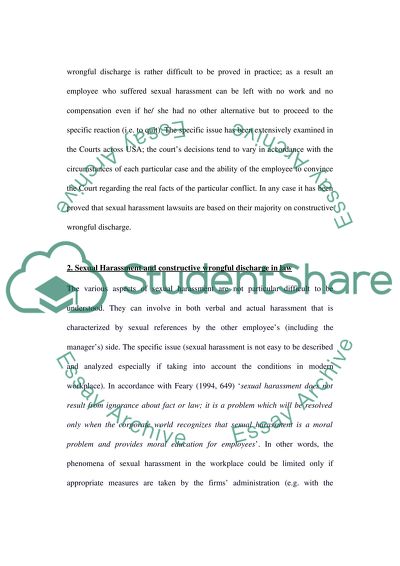Cite this document
(Sexual Harassment Lawsuits Term Paper Example | Topics and Well Written Essays - 1500 words, n.d.)
Sexual Harassment Lawsuits Term Paper Example | Topics and Well Written Essays - 1500 words. https://studentshare.org/law/1547196-sexual-harassment-lawsuits-often-include-wrongful-discharge
Sexual Harassment Lawsuits Term Paper Example | Topics and Well Written Essays - 1500 words. https://studentshare.org/law/1547196-sexual-harassment-lawsuits-often-include-wrongful-discharge
(Sexual Harassment Lawsuits Term Paper Example | Topics and Well Written Essays - 1500 Words)
Sexual Harassment Lawsuits Term Paper Example | Topics and Well Written Essays - 1500 Words. https://studentshare.org/law/1547196-sexual-harassment-lawsuits-often-include-wrongful-discharge.
Sexual Harassment Lawsuits Term Paper Example | Topics and Well Written Essays - 1500 Words. https://studentshare.org/law/1547196-sexual-harassment-lawsuits-often-include-wrongful-discharge.
“Sexual Harassment Lawsuits Term Paper Example | Topics and Well Written Essays - 1500 Words”. https://studentshare.org/law/1547196-sexual-harassment-lawsuits-often-include-wrongful-discharge.


